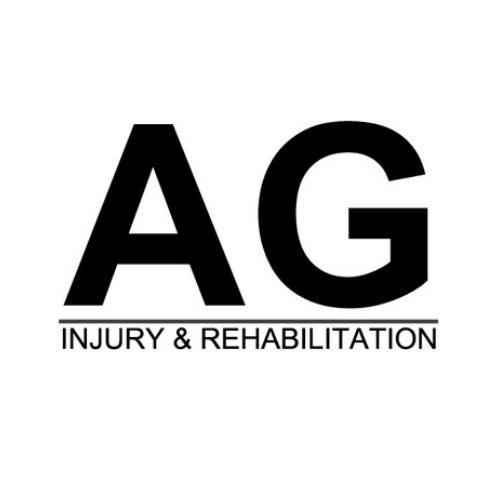Sciatica is more than just a nagging backache—it can significantly disrupt your daily life, making simple activities like walking, sitting, or even sleeping feel like monumental tasks. If you’re between the ages of 30 and 60 and dealing with sciatica, you’re not alone. This guide will provide you with practical tips and exercises to help relieve sciatica pain and get you back to feeling like yourself again.
What is Sciatica?
Sciatica refers to pain that radiates along the path of the sciatic nerve, which runs from your lower back through your hips, buttocks, and down each leg. This pain is often caused by a herniated disc, bone spur, or spinal stenosis compressing part of the nerve. Common symptoms include:
-
Sharp, shooting pain that travels down one leg
-
Numbness or tingling in the leg or foot
-
Weakness in the affected leg
Understanding the root cause of your sciatica is crucial for effective treatment. While severe cases may require medical intervention, many people find significant relief through lifestyle adjustments and targeted exercises.
How to Relieve Sciatica: A Holistic Approach
Finding relief from sciatica often involves a combination of strategies. Here are some evidence-based approaches:
1. Heat and Ice Therapy
Alternating heat and ice can reduce inflammation and ease pain. Ice packs help numb the area and decrease swelling, while heat promotes blood flow to the region, aiding in muscle relaxation. Try this:
-
Ice: Apply for 15-20 minutes every hour during the acute phase of pain.
-
Heat: Use a heating pad for 15-20 minutes once the inflammation subsides.
2. Stay Active
While it might be tempting to stay in bed, prolonged inactivity can worsen sciatica. Gentle movements and low-impact activities like walking or swimming can keep your spine healthy and promote healing. Avoid activities that exacerbate the pain.
3. Mind Your Posture
Poor posture can strain your lower back and aggravate sciatica symptoms. When sitting, use a chair with good lumbar support and keep your feet flat on the floor. Standing desks or lumbar cushions can also help.
Exercises for Sciatica Relief
Targeted exercises can strengthen your back and core, reduce nerve pressure, and alleviate pain. Here are some beginner-friendly stretches for sciatica relief:
1. Piriformis Stretch
The piriformis muscle, located in the buttock, can sometimes irritate the sciatic nerve. This stretch helps loosen it:
-
Lie on your back with both knees bent.
-
Cross your right ankle over your left knee.
-
Gently pull your left thigh toward your chest.
-
Hold for 20-30 seconds, then switch sides.
2. Child’s Pose
This yoga pose gently stretches your lower back and hips:
-
Kneel on the floor and sit back on your heels.
-
Stretch your arms forward and lower your torso toward the ground.
-
Hold for 30 seconds to a minute.
3. Cat-Cow Stretch
This dynamic stretch improves spinal flexibility and reduces tension:
-
Start on all fours with your hands under your shoulders and knees under your hips.
-
Inhale as you arch your back, lifting your head and tailbone (Cow Pose).
-
Exhale as you round your back, tucking your chin and pelvis (Cat Pose).
-
Repeat for 1-2 minutes.
4. Pelvic Tilt
This exercise strengthens your lower back and core:
-
Lie on your back with knees bent and feet flat on the floor.
-
Tighten your abdominal muscles and press your lower back into the floor.
-
Hold for 5 seconds, then release.
-
Repeat 10-15 times.
I also have some more sciatica exercise tips on my TikTok page, so feel free to check them out!
Sciatica Treatment Options
If at-home remedies and exercises don’t provide relief, consider these treatment options:
1. Physical Therapy
A physical therapist can design a tailored exercise program to strengthen your core, improve posture, and reduce nerve irritation.
2. Medications
Over-the-counter pain relievers like ibuprofen or acetaminophen can help manage symptoms. In severe cases, your doctor may prescribe muscle relaxants or nerve pain medications.
3. Injections
Epidural steroid injections can provide temporary relief by reducing inflammation around the nerve.
4. Surgery
While rare, surgery may be necessary if sciatica causes significant weakness, loss of bladder or bowel control, or severe, unrelenting pain.
Expert Insights
Dr. Emily Richards, a spine specialist, explains, “The key to managing sciatica is consistency. Regular exercises and posture awareness can prevent flare-ups and promote long-term relief. While medical treatments can be effective, lifestyle changes are often the most sustainable solution.”
Real-Life Success Story
Sarah, a 45-year-old teacher, struggled with sciatica for months. She recalls, “I couldn’t sit through a class without pain shooting down my leg. Physical therapy and simple stretches like the piriformis stretch changed everything. Now, I’m back to enjoying my daily walks pain-free.”
Sciatica Relief: Do’s and Don’ts
Do:
-
Stay active and incorporate low-impact exercises.
-
Practice good posture, especially when sitting or standing for long periods.
-
Use heat and ice therapy as needed.
Don’t:
-
Sit for extended periods without breaks.
-
Perform high-impact activities that worsen pain.
-
Ignore persistent symptoms—consult a healthcare professional if needed.
When to See a Doctor
Seek medical attention if you experience:
-
Severe pain that doesn’t improve with self-care
-
Numbness or weakness in the leg
-
Loss of bladder or bowel control
Early intervention can prevent complications and ensure effective treatment.
Sciatica doesn’t have to control your life. By incorporating these tips and exercises, you can find relief and improve your quality of life. Remember, consistency is key. Start small, listen to your body, and consult a professional if your symptoms persist.
For more tips and expert advice on managing pain and improving mobility, explore our other blog posts or reach out to a qualified healthcare provider.

